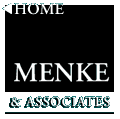

|
|
| The PRO-Productivity System (tm) | |
|
REALITY CHECK
Corporate "employee participation" programs designed to enhance productivity without the nexus of stock ownership have shown disappointing results. The "Quality Circle" movement hailed so loudly in the early '80s has now nearly collapsed. The "Total Quality" movement of the '90s has been assailed as jargon. Initial success in these programs too often pales when employees realize that the real payoff for their extra efforts is going to someone else.
Fortunately, techniques for enhancing employee productivity through ownership have evolved rapidly. Stimulated by the 1984 law which encouraged founding shareholders to sell tax free to Employee Stock Ownership Plans, experience with employee ownership has reached critical mass. Many pioneering managers have recorded their insights for others to follow. Over seven hundred newspaper and magazine articles about ESOPs and productivity were published during 1991-92 alone. By selecting from a battery of tools already proven by other companies--and by avoiding their false starts managers now have the power to engineer significant changes in the productivity rate with assurance, though not without a well-conceived long-term plan for effecting organizational change. Management's first commitment when crafting the plan must be to share some ownership with employees.
It is important that employees realize they are "on the risk" of the company's long-term success.
Stock ownership is therefore the logical compensation measure for productivity improvement. This is particularly obvious if the productivity enhancement program requires current sacrifice, such as a limitation on bonuses and raises, to permit reinvestment of capital in the business. An ESOP leaves these dollars invested in the company where they provide the capital foundation for productivity growth.
Executives often scoff that rank and file employees are unable to conceptualize the benefits of stock ownership. "All they want is cash" is a frequent opinion. Yet most of these same employers sponsor voluntary employee salary deferral plans (401(k) Plans) which at least satisfy minimum participation requirements by non-highly compensated employees. Experience proves that with proper leadership, even the least well-educated employees can gradually come to value the worth of the ESOP. It's surprising how much attention people pay when the topic is money.
No employee would turn down a cash productivity bonus, but if the company seeks long-term improvement in productivity, at least a part of the employee's compensation must match the long-term nature of the objective.
Both components, employee participation and employee ownership, are integral to an effective productivity enhancement plan.
"One can go through the motions, complete every step and totally miss the desired outcome of ownership mentality. We are changing people's behavior through this process. People need time to become comfortable with their new behavior before moving on to the next step. Most of us can only handle one crisis at a time.13
Yet even a stock-based participation plan can backfire if the rewards are not understood to correspond with the extra effort required. In itself, adopting an Employee Stock Ownership Plan is not a productivity-enhancement panacea.
Problems in the implementation of employee ownership plans can almost always be traced to casual or incomplete communications regarding the plan.
It's an old saw, but a true one, that rumor expands to fill a vacuum of information. Employees are also quick to pick up on contradictory messages. For this reason, top management must determine what they wish to accomplish with the plan at the outset and short-circuit misunderstanding with clear, consistent and repeated communications.
Educating employees about the totality of their compensation program and the role that a company stock investment can play in their financial security is an essential ongoing task once the plan exists. This is the second minimum commitment of managers considering adoption of a plan. Any further disclosures--of the company's operational or financial results, for instance--should be tailored to support the level of autonomous decision-making required under the new productivity program.
These legitimate caveats all relate to choices within management's control. It's up to management to design and communicate a plan with real potential.
Obviously, deep-seated cultural change takes a while to set down roots. Yet despite pessimistic assessments like the one in the box above, many programs can be designed for rapid initial impact.
Shareholders can virtually guarantee a bold start by committing to sell--perhaps over a period of a few years--a block of stock equal to at least one-third of the payroll for the participants in the plan. This generates average individual stock account values of one-third of a year's pay--enough to make almost anyone sit up and take notice. Even if there is no immediate growth in the per-share value of the stock at all, the individual employee's investment will increase as stock is paid into the accounts.
Stock may be acquired from selling shareholders or represent newly issued shares backed by new capital investment in the company. In the latter case, management has an especially interesting story to communicate. Employees will see the new investment project unfolding about them and realize the potential it holds for the company in which they now have an investment. In a very real sense, of course, what happens next to the value of that investment is up to them.
Back to the Index |